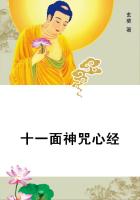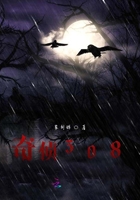I have discovered an anecdote with respect to the field-fare (turdus pilaris), which I think is particular enough: this bird, though it sits on trees in the day-time, and procures the greatest part of its food from white-thorn hedges; yea, moreover, builds on very high trees;as may be seen by the Fauna Suecica; yet always appears with us to roost on the ground. They are seen to come in flocks just before it is dark, and to settle and nestle among the heath on our forest. And besides, the larkers, in dragging their nets by night, frequently catch them in the wheat-stubbles; while the bat-fowlers, who take many red-wings in the hedges, never entangle any of this species.
Why these birds, in the matter of roosting, should differ from all their congeners, and from themselves also with respect to their proceedings by day, is a fact for which I am by no means able to account.
I have somewhat to inform you of concerning the moose-deer; but in general foreign animals fall seldom in my way; my little intelligence is confined to the narrow sphere of my own observations at home.
Letter XXVIII
To Thomas Pennant, EsquireSelborne, March, 1770.
On Michaelmas-day 1768 I managed to get a sight of the female moose belonging to the Duke of Richmond, at Goodwood; but was greatly disappointed, when I arrived at the spot, to find that it died, after having appeared in a languishing way for some time, on the morning before. However, understanding that it was not stripped, Iproceeded to examine this rare quadruped: I found it in an old green-house, slung under the belly and chin by ropes, and in a standing posture; but, though it had been dead for so short a time, it was in so putrid a state that the stench was hardly supportable. The grand distinction between this deer, and any other species that Ihave ever met with, consisted in the strange length of its legs; on which it was tilted up much in the manner of birds of the grallae order. I measured it, as they do an horse, and found that, from the ground to the wither, it was just five feet four inches; which height answers exactly to sixteen hands, a growth that few horses arrive at: but then, with this length of legs, its neck was remarkably short, no more than twelve inches; so that, by straddling with one foot forward and the other backward, it grazed on the plain ground, with the greatest difficulty, between its legs: the ears were vast and lopping, and as long as the neck; the head was about twenty inches long, and ass-like; and had such a redundancy of upper lip as Inever saw before, with huge nostrils. This lip, travellers say, is esteemed a dainty dish in North America. It is very reasonable to suppose that this creature supports itself chiefly by browsing of trees, and by wading after water-plants; towards which way of livelihood the length of leg and great lip must contribute much. Ihave read somewhere that it delights in eating the nymphaea, or water-lily. From the fore-feet to the belly behind the shoulder it measured three feet and eight inches: the length of the legs before and behind consisted a great deal in the tibia, which was strangely long; but in my haste to get out of the stench, I forgot to measure that joint exactly. Its scut seemed to be about an inch long; the colour was a grizzly black; the mane about four inches long; the fore-hoofs were upright and shapely, the hind flat and splayed. The spring before it was only two years old, so that most probably it was not then come to its growth. What a vast tall beast must a full-grown stag be! I have been told some arrive at ten feet and an half!
This poor creature had at first a female companion of the same species, which died the spring before. In the same garden was a young stag, or red deer, between whom and this moose it was hoped that there might have been a breed; but their inequality of height must have always been a bar to any commerce of the amorous kind. I should have been glad to have examined the teeth, tongue, lips, hoofs, etc., minutely; but the putrefaction precluded all further curiosity. This animal, the keeper told me, seemed to enjoy itself best in the extreme frost of the former winter. In the house they showed me the horn of a male moose, which had no front-antlers, but only a broad palm with some snags on the edge.
The noble owner of the dead moose proposed to make a skeleton of her bones.
Please to let me hear if my female moose corresponds with that you saw; and whether you think still that the American moose and European elk are the same creature.
I am,With the greatest esteem. etc.
Letter XXIX
To Thomas Pennant, EsquireSelborne, May 12, 1770.
Dear Sir,Last month we had such a series of cold turbulent weather, such a constant succession of frost, and snow, and hail, and tempest, that the regular migration or appearance of the summer birds was much interrupted. Some did not show themselves (at least were not heard) till weeks after their usual time; as the black-cap and white-throat; and some have not been heard yet, as the grasshopper-lark and largest willow-wren. As to the fly-catcher, I have not seen it; it is indeed one of the latest, but should appear about this time: and yet, amidst all this meteorous strife and war of the elements, two swallows discovered themselves as long ago as the eleventh of April, in frost and snow; but they withdrew quickly, and were not visible again for many days. House-martins, which are always more backward than swallows, were not observed till May came in.
Among the monogamous birds several are to be found, after pairing-time, single, and of each ***: but whether this state of celibacy is matter of choice or necessity, is not so easily discoverable. When the house-sparrows deprive my martins of their nests, as soon as I cause one to be shot, the other, be it cock or hen, presently procures a mate, and so for several times following.















